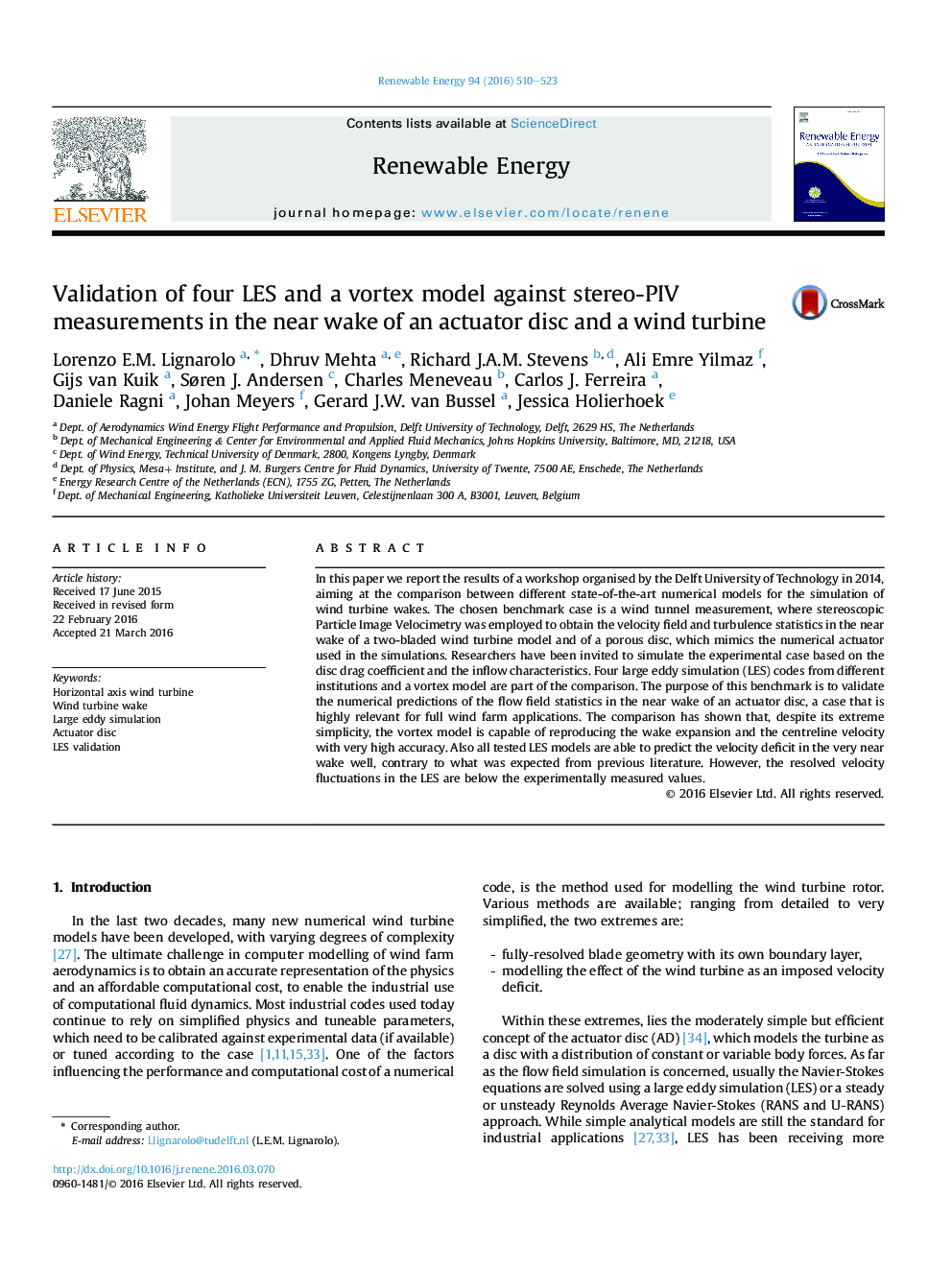| Article ID | Journal | Published Year | Pages | File Type |
|---|---|---|---|---|
| 6766004 | Renewable Energy | 2016 | 14 Pages |
Abstract
In this paper we report the results of a workshop organised by the Delft University of Technology in 2014, aiming at the comparison between different state-of-the-art numerical models for the simulation of wind turbine wakes. The chosen benchmark case is a wind tunnel measurement, where stereoscopic Particle Image Velocimetry was employed to obtain the velocity field and turbulence statistics in the near wake of a two-bladed wind turbine model and of a porous disc, which mimics the numerical actuator used in the simulations. Researchers have been invited to simulate the experimental case based on the disc drag coefficient and the inflow characteristics. Four large eddy simulation (LES) codes from different institutions and a vortex model are part of the comparison. The purpose of this benchmark is to validate the numerical predictions of the flow field statistics in the near wake of an actuator disc, a case that is highly relevant for full wind farm applications. The comparison has shown that, despite its extreme simplicity, the vortex model is capable of reproducing the wake expansion and the centreline velocity with very high accuracy. Also all tested LES models are able to predict the velocity deficit in the very near wake well, contrary to what was expected from previous literature. However, the resolved velocity fluctuations in the LES are below the experimentally measured values.
Related Topics
Physical Sciences and Engineering
Energy
Renewable Energy, Sustainability and the Environment
Authors
Lorenzo E.M. Lignarolo, Dhruv Mehta, Richard J.A.M. Stevens, Ali Emre Yilmaz, Gijs van Kuik, Søren J. Andersen, Charles Meneveau, Carlos J. Ferreira, Daniele Ragni, Johan Meyers, Gerard J.W. van Bussel, Jessica Holierhoek,
